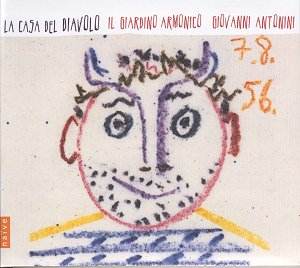Listening to this disc will certainly blow the cobwebs
away. On second thoughts, the experience could more accurately
be described as blasting the cobwebs away. Superbly performed
interpretations breathe life and a sense of adventure into this
music that ranges from late Baroque to the Classical period.
Il Giardino Armonico are one of several outstanding specialist
period instrument ensembles that have come to prominence on
the early music scene in the last ten or so years. They have
successfully ratcheted-up the level of technical proficiency
and interpretation. Undoubtedly the earlier pioneering interpretations
using period-instruments were dictated by the severe limitations
of their instruments. Consequently the performance style often
came across as technically mechanical, lacklustre, frequently
insipid and even sterile. Present-day players explore and exploit
the strengths of their period instruments rather than being
restricted by the weaknesses. Other notable specialist period
instrument ensembles in this repertoire include: Concerto Italiano
under Rinaldo Alessandrini; Venice Baroque Orchestra under Andrea
Marcon with Giuliano Carmignola; Europa Galante under Fabio
Biondi; Arte Dei Suonatori with Rachel Podger; The English Concert
under Andrew Manze; Ensemble Explorations under Roel Dieltiens;
and the Freiburger Barockorchester under Gottfried von der Goltz.
Il Giardino Armonico, founded in Milan in 1985, bring
together a number of graduates from some of Europeís leading
colleges of music, all of whom have specialised in playing period
instruments. The ensembleís repertory is concentrated on the
17th and 18th centuries, from Biber to Boccherini, Depending
on the demands of each programme, the ensemble will consist
of anything from three to thirty musicians. Il Giardino Armonico
first came to my attention with a stunning version of Vivaldiís
The Four Seasons, a disc that gained the prestigious
Diapason díOr, Choc de la Musique and Grand Prix des Discophiles,
in 1994.
Here they concentrate on a programme of eighteenth century repertoire. Gluckís Dance of the Spectres and the
Furies is the final piece from his opera Don Juan ou
Le Festin de pierre. Baroque trumpets punctuate the work, blaring out incisively
like modern-day car horns, together with those swirling strings.
With C.P.E. Bachís three movement Sinfonia we see
the composerís expression of feelings and emotions in what is
an early characterisation of Romantic music. Bachís abrupt dynamic
shifts, bold modulations and sudden switches of mood are handled
expertly.
Locatelliís Concerto grosso features a remarkable
series of slow movements but is in fact an instrumental cantata
where the part of Arianna is taken by the solo violin in imitation
of the human voice. The violin is expertly played by Enrico
Onofri. The continual mood changes provide the true character
of a cantata.
The three movement Concerto in F minor is attributed
to W.F. Bach, although there is some doubt over the authorship.
For me this is the highlight of the release. The players and
soloist are most adept in this vividly dramatic work of
substantial emotional power.
Boccherini composed his five movement Sinfonia in D minor
in 1771, in Madrid. His incomparable rhythmic convulsions are
powerfully done.
For their fiercely propulsive and compellingly vital
performances Il Giardino Armonico has few equals.
Michael
Cookson

![]() Il Giardino Armonico/Giovanni Antonini
Il Giardino Armonico/Giovanni Antonini![]() NAŌVE
OP 30399 [69:23]
NAŌVE
OP 30399 [69:23]





